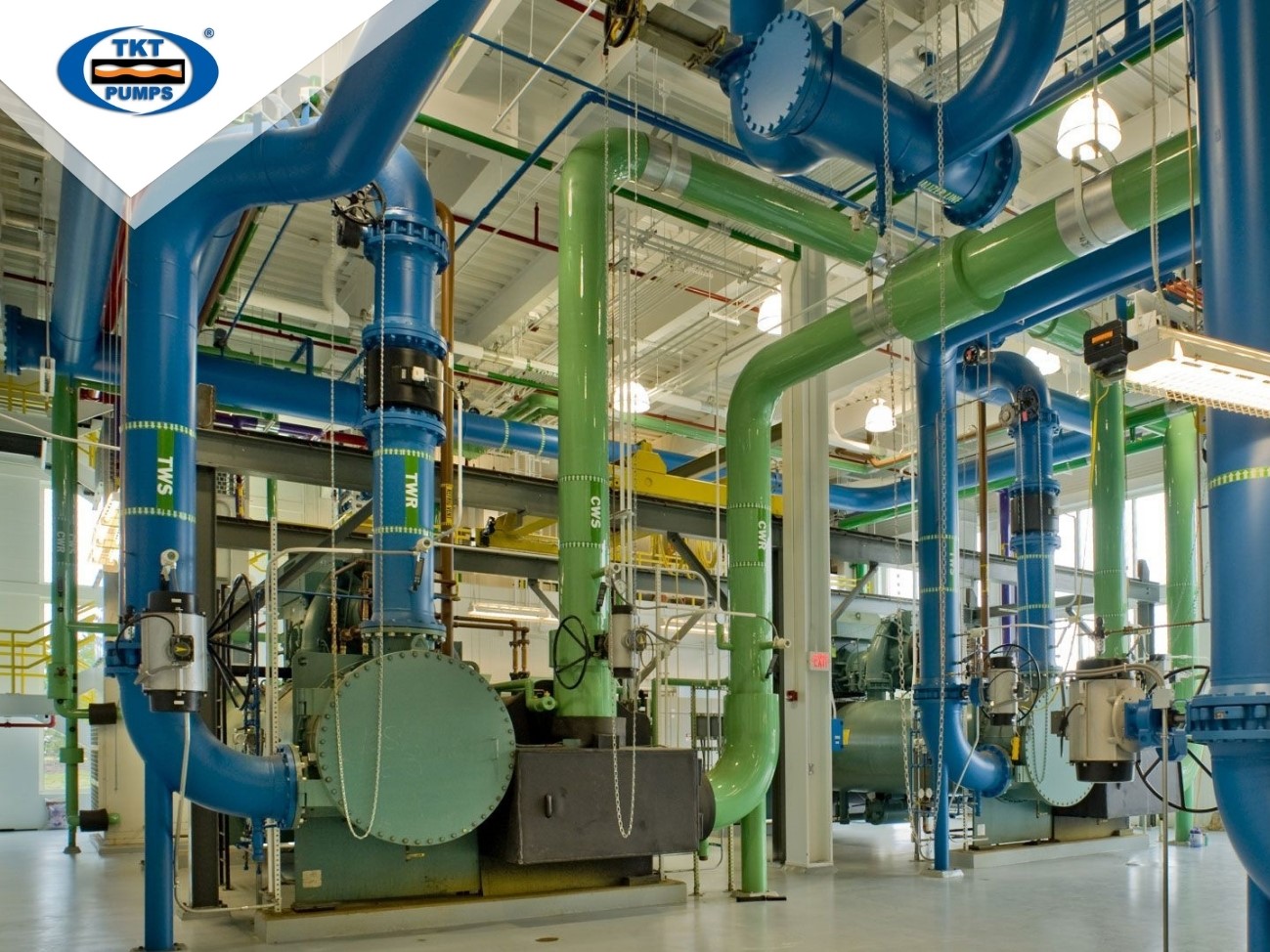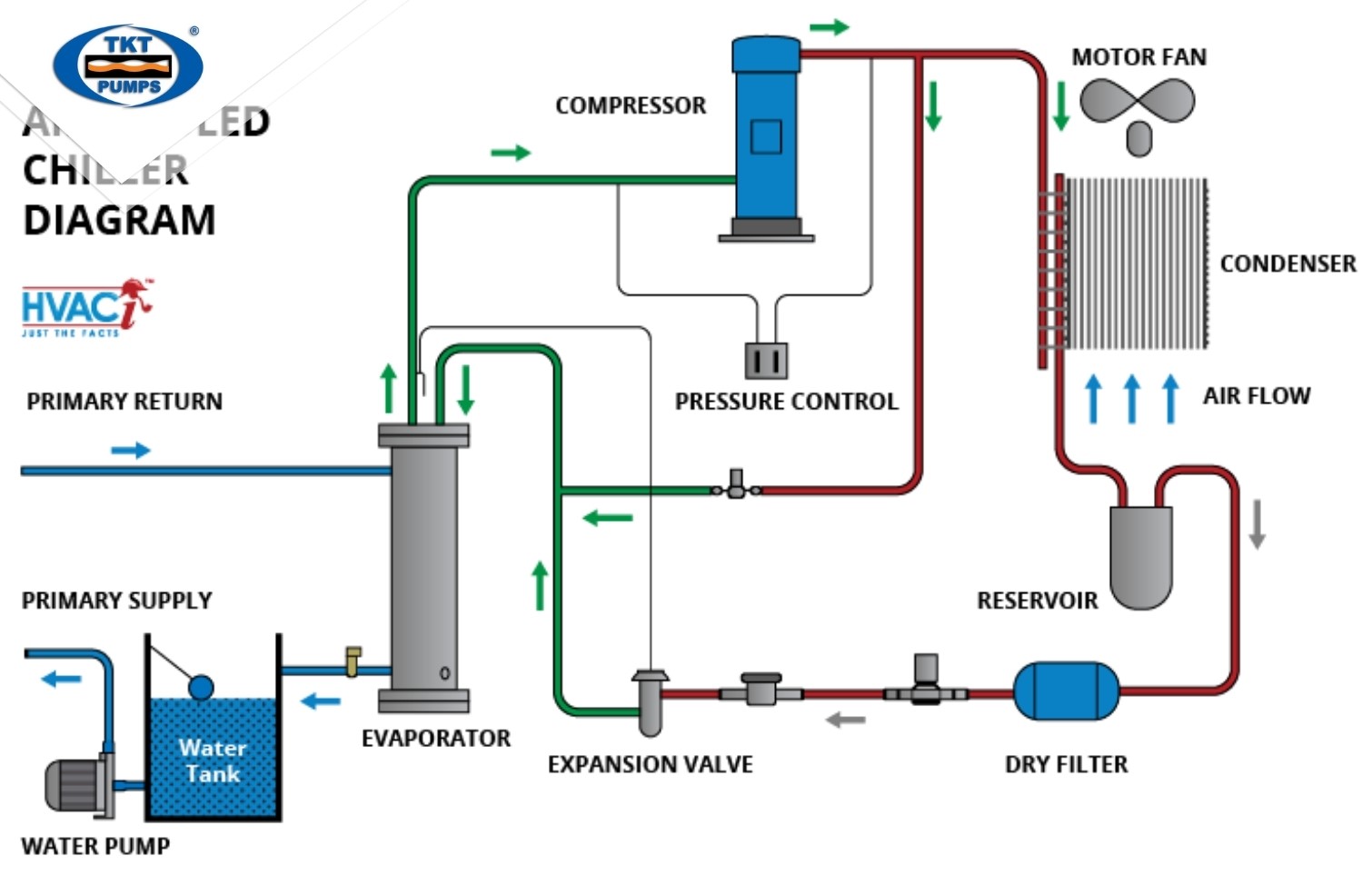What is a chiller? Chillers have become an essential HVAC component of many types of commercial facilities, including hotels, restaurants, hospitals, sports halls, manufacturing, and industrial plants, and more.
What is a chiller system?
Commercial buildings use heating, ventilation, and air conditioning (HVAC) systems to dehumidify and cool the building. Modern commercial buildings equip themselves with efficient chiller and HVAC systems, as part of a broader range of solutions focused on building performance and sustainability. Likewise, building occupants also have high expectations that the HVAC system will function as intended. . . to create a comfortable interior environment regardless of the external conditions of the building.

Chillers have become an essential HVAC component of many types of commercial facilities, including hotels, restaurants, hospitals, sports halls, manufacturing, and industrial plants, and more. This system can consume more than 50% of the total electricity used during seasonal times. However, more than 30% of the energy used is due to various inefficient activities. These admitted inefficiencies cost companies and construction companies billions of dollars annually.
In general, the chiller facilitates the transfer of heat from the internal environment to the external environment. This heat transfer device relies on the physical state of the refrigerant as it circulates through the refrigeration system. The chiller is considered the heart of any central HVAC system.
What is the working principle of a chiller?
Chillers operate on the principle of vapor-compression or vapor absorption. The chiller provides a continuous flow of coolant to the cold side of the process water system at the desired temperature of approximately 10°C. The coolant is then pumped through the process, extracting heat away from one area of the facility (e.g. machinery, process equipment, …) as it flows back to the return side of the water system. procedure.
Chiller uses a mechanical refrigeration system that compresses steam connected to the process water system through a device called an evaporator. The refrigerant circulates through the evaporator, compressor, condenser, and expansion device of the chiller. Thermodynamic processes occur in each of the above components of the chiller. The evaporator acts as a heat exchanger so that the heat captured by the process coolant flows to the refrigerant. As heat transfer takes place, the refrigerant evaporates, converting from a low-pressure liquid to a vapor, while the temperature of the process coolant decreases.

The refrigerant then flows to a compressor, which performs many functions. First, it removes refrigerant from the evaporator and ensures that the pressure in the evaporator remains low enough to absorb heat at the correct rate. Second, it increases the pressure in the outgoing refrigerant vapor to ensure that its temperature remains high enough to release heat as it reaches the condenser. The refrigerant returns to the liquid state at the condenser. Latent heat is generated when the refrigerant changes from a vapor to a liquid which is carried out of the environment by the refrigerant (air or water).
Types of chiller equipment
As described, two different cooling media (air or water) can facilitate heat transfer as the refrigerant changes from vapor to liquid. Thus, the chiller can use two different types of condensers, air-cooled and water-cooled.
The air-cooled condenser is like a “radiator” that cools a car engine. They use a motorized blower to push air through a grid of refrigerant lines. Unless they are specifically designed for high ambient conditions, air-cooled condensers require an ambient temperature of 35°C or less to operate effectively.
The water-cooled condenser performs the same function as the air-cooled condenser, but two steps are required to complete the heat transfer. First, heat moves from the refrigerant vapor into the condensate. The warm condensate is then pumped to a cooling tower, where the final process heat is released to the atmosphere.
Water-cooled chiller chiller
A water-cooled chiller has a water-cooled condenser connected to a cooling tower. They are generally used for medium and large installations with adequate water supply. Water-cooled chillers can produce a more consistent performance for commercial and industrial air conditioners because of their relative independence from ambient temperature fluctuations. Water-cooled chillers range in size from small 20-ton capacity types to thousands-ton models to help cool large facilities such as airports, shopping malls, and other facilities.

A typical water-cooled chiller uses circulating condensate from a cooling tower to condense the refrigerant. The water-cooled chiller contains refrigerant depending on the condenser water inlet temperature (and flow rate), which functions about the ambient wet-bulb temperature. Since the wet-bulb temperature is always lower than the dry-bulb temperature, the condensing temperature (and pressure) of the refrigerant in a water-cooled chiller can often be significantly lower than that of a cooled chiller. by air. As a result, the water-cooled chiller can operate more efficiently.
Water-cooled chillers are typically located indoors, in an environment protected from the elements. As a result, the water-cooled chiller can have a longer service life. Water-cooled chillers are often the only option for large installations. Additional cooling tower systems will require additional installation and maintenance costs compared to air-cooled chillers.
Air-cooled chiller
Air-cooled chillers rely on a condenser that is cooled by ambient air. Therefore, air-cooled chillers can be universally applied in small or medium-sized installations where space constraints may exist. An air-cooled chiller can be the most practical choice in situations where water represents a scarce resource.
A typical air-cooled chiller may have impellers, or mechanical refrigeration cycles, to draw ambient air through a finned coil to condense the refrigerant. Condensation of refrigerant vapor in an air-cooled condenser allows heat transfer to the atmosphere.
Air-cooled chillers offer the significant advantage of lower installation costs. Maintenance is also simpler due to its relative simplicity compared to water-cooled chillers. The air-cooled chiller will take up less space, but will mostly be located outside the facility. Therefore, outdoor elements will reduce their functional life.

The nature of air-cooled chillers reduces maintenance costs. Their relative simplicity coupled with reduced space requirements give them great advantages in many types of installations.
How to increase the efficiency of the cooling system
Chillers cost a significant portion of a building’s utility bill. What measures should be taken to save energy through maximum cooling system efficiency? Consider some possibilities as suggested below:
Routine maintenance
Refrigeration systems will operate more efficiently through routine maintenance. Most organizations recognize this value and have taken steps as part of their daily facility management best practices. Some common best practices for refrigeration systems include:
– Check and clean the condenser coils. Heat transfer has a great influence on the chiller system and is still fundamental to efficient chiller operation. Routine maintenance should check the condenser coils for blockages and free air flow.
– Maintain refrigerant. The chiller’s cooling quotient depends on the proper refrigerant level in the system. Maintaining the right amount of refrigerant can have a big impact on energy efficiency by reducing refrigeration costs by almost 5-10%.
– Condensate retention: Condensate rings used with cooling towers must maintain an adequate water flow as designed. Any debris such as sand, corrosive solids and contaminated material can affect the condensate ring. Descaling can impede water flow and greatly affect chiller performance.

Smart monitoring
Artificial Intelligence (AI) continues to evolve in everyday real-life applications. Machines like refrigeration systems will benefit from AI algorithms that can detect potential failures before they happen. Predictive maintenance leverages the collection and analysis of refrigeration system operational data to determine when maintenance actions need to be taken before a critical problem occurs.
Since the chiller system represents the heart of most modern HVAC systems, preventing serious failures that cause significant “downtime” saves on emergency repair costs as well as reputation. The vital role of a refrigeration system warrants increasing scrutiny. Big data and AI will minimize downtime and maximize productivity.
Optimization
Chillers act as part of a complex HVAC system. Water-cooled chillers are more complex because they have to be connected to a cooling tower system. Therefore, assessing the overall performance of a chiller plant will involve analyzing the total power consumption of compressors, pumps, cooling tower fans, etc. to evaluate comprehensive efficiency measures. as kW/ton.
The overall optimization of the chiller plant must be done holistically. Various adjustments focusing on optimal chilled water setpoint, cooling sequence and load balancing, peak demand management, cooling tower water management, … can only be made with data operate. IoT can provide tools for such optimization by providing real-time monitoring of power consumption from each part of the chiller plant, supply/return temperatures from the chiller. and cooling tower, water flow rate from condenser loop,…

Chiller’s performance will have a huge impact on your building’s operating costs. Ongoing routine maintenance represents a bare minimum from the facility management’s point of view. Predictive maintenance and optimization of refrigeration systems require real-time operational data. IoT has opened the door to new forms of efficient refrigeration.
You need a solution to use pumps, blowers or heat exchangers for chiller systems. Please contact Thai Khuong immediately for advice and support!


